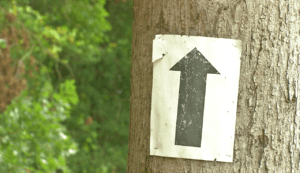
MARYLAND – Maryland’s trail system is due for an upgrade. Friday, transportation officials announced an ambitious plan to ensure the pathways are more connected and better supported.
“An opportunity to plan for the future,”
The state’s Land Preservation, Parks & Recreation Plan hasn’t been updated since 2009. Now, officials say they are planning for years to come.
“This is an opportunity to plan for the future and think about better connecting our trails to an integrated statewide network built for this generation,” said Maryland Department of Transportation (MDOT) Assistant Secretary Joe McAndrew.
McAndrew added that the work will take many resources, “but will also take a coalition of folks interested in supporting and shepherding this plan forward for the next 10 to 15 years.”
Pathways on the Peninsula
McAndrew says the Eastern Shore is particularly “devoid” of adequate trail networks. However, the peninsula is full of potential.
“We have several old rail corridors that could serve as rail-banked facilities that we could turn into rails to trails,” McAndrew said. “Those are huge opportunities that not only knit together one or two miles, but 20 to 30 to 40-mile connections.”
However, fully fleshing out those plans proves to be challenging on the Eastern Shore, says the Director of Land Use and Policy at Eastern Shore Land Conservancy (ESLC), Owen Bailey. Just one mile of paved trail can cost up to $1 million.
“It’s because our local governments are very small,” Bailey explained. “Some of the towns have a part-time zoning administrator or manager, and they don’t have the capacity, the experience, or the funding to go after the necessary grants to build trails.”
The trails that do come to life continue to prove invaluable, Bailey says. That’s why ESLC is working with local leaders to identify communities’ needs in the new plan.
“It seemed like something that we should lean into, just to help advocate the importance of the trails, the value they bring, and just helping out local governments to ask questions on what they can do to make themselves more prepared and more competitive,” Bailey said.
Partnership and Bigger Picture
The Maryland Department of Natural Resources (MDNR) is another agency that has a hand in the planning.
“It will be really important for us to take what we have as our priorities for our recreation trails and make sure they’re working with the tools and strategic planning that MDOT is doing,” said Sandi Olek, MDNR’s Director of the Maryland Office of Outdoor Recreation. “[Locals] are doing on-the-ground surveys and identifying the priorities of their communities, and the priorities of their residents. We need to take those priorities and fold them in, and make sure that we’re getting that engagement, also.”
Building out the state’s trail system will have multiple important impacts, Bailey says: improving public health, promoting economic development, and forming stronger community ties.
“We’ve built our environment so that our communities are very separated, and you can only access places via car,” Bailey said. “Trails are ways to help bridge those connections.”
And in the bigger picture, state officials think that the work will help the state achieve loftier goals.
“The more we can establish infrastructure from a non-motor vehicle transportation, the better we can do for climate mitigation,” Olek said. “[We are] trying to look at the infrastructure and get things in place to protect that infrastructure, but it can’t just be about planting trees and living shorelines. We also have to create spaces for people.”
Getting Ahead
Over the next six months, McAndrew says MDOT will work with the state’s Bicycle and Pedestrian Advisory Committee, as well as other state agencies and local partners. The groups will collaborate on what will be included in the plan, and how to implement those goals.
“Every plan is only as good as its implementation and strategy,” McAndrew said. “So, we’re really focused on the outcome that we could deliver here. In the near term, that builds momentum for bigger wins in the long term.”
Back on the Eastern Shore, Bailey has some tips for local leaders looking for success with the state: include trails in comprehensive plans, create bike and pedestrian advisory committees, and advocate for comprehensive trail master plans.
Bailey says that some local jurisdictions have already seen success by following those tips. He named Easton’s trail network, Queen Anne County’s Cross Island Trail, and Chestertown’s trails. Salisbury, meanwhile, has a lot of potential connections to existing networks, Bailey says, and Cambridge is working to expand its trail system into low-income neighborhoods.
Investments Are Important, Say Advocates
However, funding is always the key.
“Our current funding model is not going to cut it,” Bailey said. “It’s going to take us hundreds of years to build out the trails that we need and want with the current funding level. So, we’re going to need better investment.”
With full support behind efforts the build out the state’s trail system, Bailey predicts a ripple effect.
“Trails have a compounding effect—a force multiplier, where that one mile of the trail you build holds a certain value, but that value can be increased by continuing to make those connections,” Bailey said. “Those trails connect to more neighborhoods, schools, parks, the outdoors, shopping centers, and job centers. It just builds on itself.”
Source link : http://www.bing.com/news/apiclick.aspx?ref=FexRss&aid=&tid=66e899dec771489ab8915ef1d3590c99&url=https%3A%2F%2Fwww.wmdt.com%2F2024%2F09%2Fmarylands-statewide-trail-system-needs-and-update-how-agencies-are-collaborating%2F&c=15321585504284504037&mkt=en-us
Author :
Publish date : 2024-09-16 09:34:00
Copyright for syndicated content belongs to the linked Source.